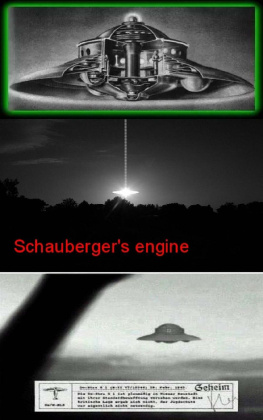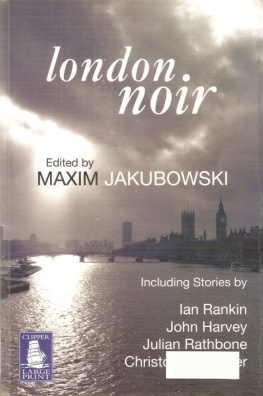Maxim Kolychev - Schauberger’s engine
Here you can read online Maxim Kolychev - Schauberger’s engine full text of the book (entire story) in english for free. Download pdf and epub, get meaning, cover and reviews about this ebook. year: 2016, genre: Science. Description of the work, (preface) as well as reviews are available. Best literature library LitArk.com created for fans of good reading and offers a wide selection of genres:
Romance novel
Science fiction
Adventure
Detective
Science
History
Home and family
Prose
Art
Politics
Computer
Non-fiction
Religion
Business
Children
Humor
Choose a favorite category and find really read worthwhile books. Enjoy immersion in the world of imagination, feel the emotions of the characters or learn something new for yourself, make an fascinating discovery.
- Book:Schauberger’s engine
- Author:
- Genre:
- Year:2016
- Rating:4 / 5
- Favourites:Add to favourites
- Your mark:
- 80
- 1
- 2
- 3
- 4
- 5
Schauberger’s engine: summary, description and annotation
We offer to read an annotation, description, summary or preface (depends on what the author of the book "Schauberger’s engine" wrote himself). If you haven't found the necessary information about the book — write in the comments, we will try to find it.
Schauberger’s engine — read online for free the complete book (whole text) full work
Below is the text of the book, divided by pages. System saving the place of the last page read, allows you to conveniently read the book "Schauberger’s engine" online for free, without having to search again every time where you left off. Put a bookmark, and you can go to the page where you finished reading at any time.
Font size:
Interval:
Bookmark:
Schauberger's engine
by Maxim Kolychev
Copyright 2016 Maxim Kolychev
All Rights Reserved
The author of the book gives a brief description of the real design of aircraft engine. Probably, this design is not similar to Schauberger's one. However the very appearance of some ideas is rather interesting. Different people in different places and time come to the same conclusions. Whether people think in a common way, or Nature laws are the same. Could you believe that the author of the article has never read or heard about Schauberger's works (I mean his engine, which operates on environment energy and has levitation properties)? But by accident (thanks to Internet) when come upon the description of designs, I was surprised to find so much in common between Shauberger's ideas and my suppositions. Outwardly Schauberger's engine looks like the following (see Fig.l):

Since the author of this work does not purpose to appropriate other's fame, then there is an attempt to explain easily the arrangement of the engine. Besides, in spite of the fact that in Internet there is rather extensive information on the device, however its immediate operation is not properly explained. There is an opinion that the device is a mystification and cannot work at all. But I think this is not the case.
Undoubtedly a wheel, which seems strange at first sight (see Fig.3), is the main part of the engine. The engine consists of 24 corkscrews-like devices, which rotate in circle

Schauberger created the ideal conditions for appearance of the group of mini-tornados and the central tornado, which is the motive force of the device. At the first stage by means of the wheel, air swirls around the axis of the electric motor. Due to centrifugal force the same air is thrown to the periphery, passes through "corkscrews" of the wheel and obtains rotation down axis of each "corkscrew". Air simultaneously swirls around 2 axes of rotation.
Let's try to take a high-speed electric motor with a flywheel, which is fixed on the axis. Then rotate the device around your hand. At the turning of the motor you will feel the forces, which acted in the way you do not expect.
Thus the wheel creates 24 mini-tornados. The upper part of the device looks like a copper basin (see Fig.4). Turning round the internal surface of the upper part of the device, mini-tornados move away to the internal cone of the device and forward the outlet.

The approximate demonstration of the internal arrangement of Schauberger's device is shown in Fig.5

The cross section of the device allows understanding of the essence of tornado, which is observed from the vertical view. The first section, which is placed a little lower than the "copper basin", is the cross-section of the tornado. The rest of two sections are placed closer to the outlet (only 9 balls are represented in Fig.6 but the principle of operation is the same).

Thus, 24 (9) balls (mini-vortices) roll inside the wall of the circle. The walls of each ball rotate in opposite directions with respect to the walls of the neighbor balls. These balls will be concerned as a dual medium: on the one hand it is a ball, since it rolls as a part of a ball bearing and laws of mechanics influenced on it, but at the same time it is air, for which laws of hydrodynamic are valid. These balls at any collision of their neighbors tend to collide to each other and thus simultaneously move to the center of the device. At the same time the opposite movement of walls of the neighbor balls represent a rarified medium, by Bernoulli's law. Thus the balls are "attracted" to each other. As a result, the whole mass of the rotating air is constricted towards the center, and then considerably accelerates (because the diameter of the device is decreasing). Finally this mass flies out the nozale, which is placed in the lower part of the device. The wheel with "corkscrews" rotates, and constantly supplying these minivortices-bearings, entrains air, which comes from inside...
Schauberger asserts that the process becomes to be self-sustaining. Natural tornado can exist for a long period of time and, obviously, the very existence of it is sustained only by pressure difference between environment and the internal cone of the tornado. The discharge zone is created in the very center of the device. It means that ambient air must approach there, after coming on the turbine blade and entraining in the rotation with complicated trajectory (such a rotation can be called a "self-eversible toroid").
It seems to me that these are the basic principles of operation of the device. Indeed, such a process can be concerned as an opposition to the ordinary explosion , since the matter does not move from the center but on the contrary, tends to constrict into the common point (to the top of the vortex). Schauberger called this process as implosion .
The rotating mini-vortices, which composite a tornado, are attracted to each other and tend to move to the basic center of rotation.
Let us return to Schauberger. The witnesses of operation of Schauberger's device asserted that only air and water were used as a fuel. Possibly, they were wrong a little. Most likely there were air and spirit, which looks like water. During the operation the engine must consume ambient air and if to provide it with some fuel and burn it, then it will forward the process of the vortex creation. In the presence of the big amount of oxygen, the flame of spirit is almost invisible. As a result, there is a "flameless and smoke-free engine", as it was presented in some publications.
In my conclusions I came to approximately the same design. Thus I offer a device, which remotely resembles Shauberger's "windmill". In general, operation of the device is based on the same principles. The similar laws are valid for the whirlpool in a bath and for the devices given below.


As distinct from Schauberger's device, there is no main cone, along which the vortex constricts to the center and is ejected through the nozzle. Another distinction consists in more simple design of the wheel, which is used for creation of the vortex (actually it is a usual centrifugal pump). The simplification of Schauberger's design (Fig. 7) is caused by the fact that a natural tornado does not need similar contrivances (though his "corkscrew" wheel calls nothing but admiration, since by the simplest and effective way it swirls air blasts at 2 perpendicular axes of rotation!). My aim is to swirl the air blast into a small tornado as simply as possible and it is desirable to use no mechanical components. This can be achieved, if instead of turbine of centrifugal pump, we will use something like MHD-engine (magnetohydrodynamic engine) for swirling. There is a design, which has no moving components (except for the vortex). In the lower part of the device (Fig. 8) there is a burning fuel (possibly, kerosene?). Moreover for MHD-engine we should use electro-conductive kerosene (possibly, salted) and natrium addition agent. Roughly speaking, there is an attempt to reproduce the natural phenomenon in a can. The essence of the process can be understood from Fig.9.
Next pageFont size:
Interval:
Bookmark:
Similar books «Schauberger’s engine»
Look at similar books to Schauberger’s engine. We have selected literature similar in name and meaning in the hope of providing readers with more options to find new, interesting, not yet read works.
Discussion, reviews of the book Schauberger’s engine and just readers' own opinions. Leave your comments, write what you think about the work, its meaning or the main characters. Specify what exactly you liked and what you didn't like, and why you think so.












